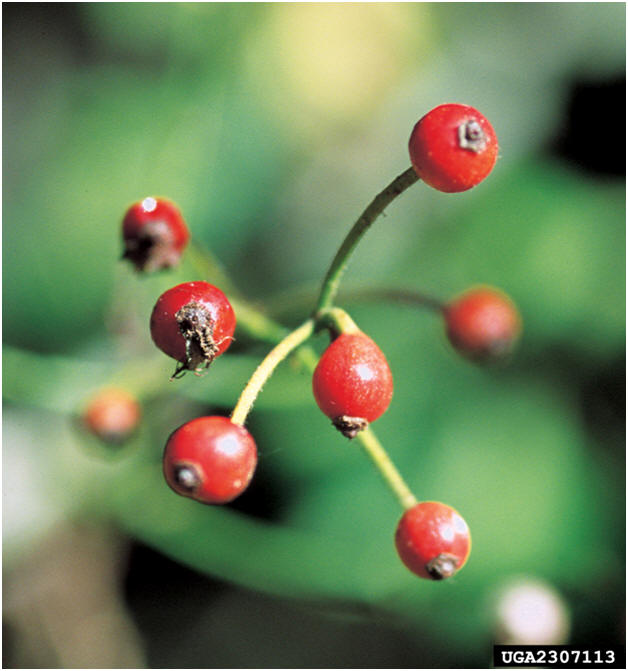The Raging Reproduction of the Rangler Rose
During the life cycle of Rosa multiflora
, there are both sexual and asexual stages. The three processes that the organism can use are as follows: seeds, root sprouts, or layering from the branches (canes). So which is a form of sexual reproduction and which of asexual? Also, if there are three possible ways in which the species can reproduce, what determines which method should be used?
 Seed
development is Rosa mulitflora's
only form of sexual reproduction.
When conditions are favorable, this is
the reproduction process that is
preferred. In order to form a new
rose bush, the seeds are dispersed
through gravity, birds, and mammal
distribution. The birds and
mammals eat the red rose hips which hold the seeds that
create the new
Seed
development is Rosa mulitflora's
only form of sexual reproduction.
When conditions are favorable, this is
the reproduction process that is
preferred. In order to form a new
rose bush, the seeds are dispersed
through gravity, birds, and mammal
distribution. The birds and
mammals eat the red rose hips which hold the seeds that
create the new
ros
e bush. After researching the dispersal of the plant's seeds, it has been proven that birds are the most successful of the seed "scatterers." This is evident by the fact that the most prevalent locations in which new rose seedlings are found are right under popular bird perch sites.
Root sprouts are an example of one of
the two processes in which Rosa
mulitflora is able to reproduce
asexually. When sexual
reproduction cannot be performed due to
harsh conditions, the asexual vegetative
buds create root development which, in
turn, produces the foundation of the offspring.
This type of reproductive strategy is
beneficial because this allows the new
bush to maintain local adaptations in
order to thrive in the area.

Continue on to see how the multiflora rose interacts with its neighboring species by clicking on Interactions with Other Species, or click here to return to Roses in the Media .
Copyright © 2007, Design by: Sunlight webdesign
